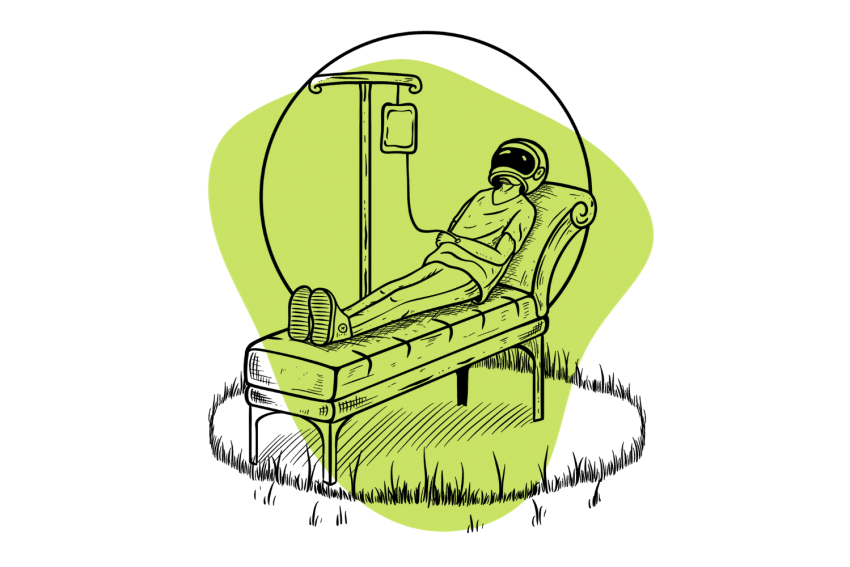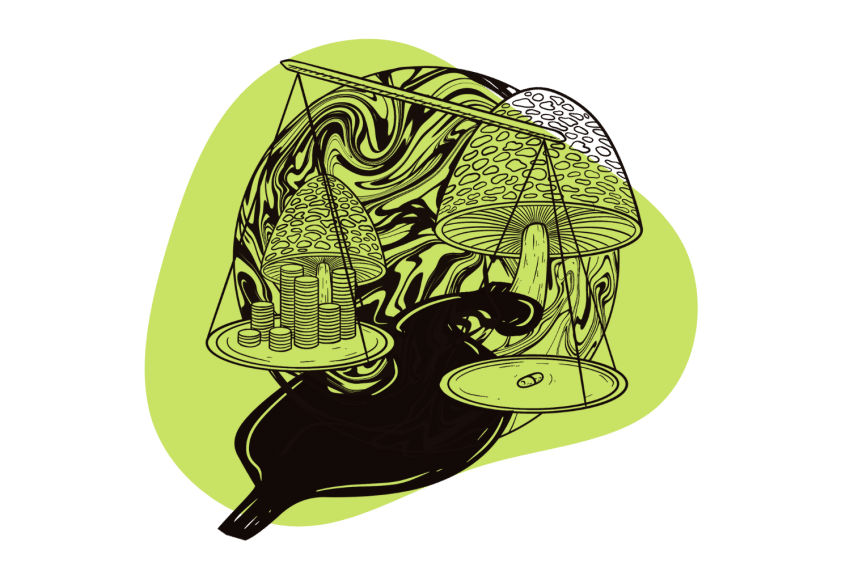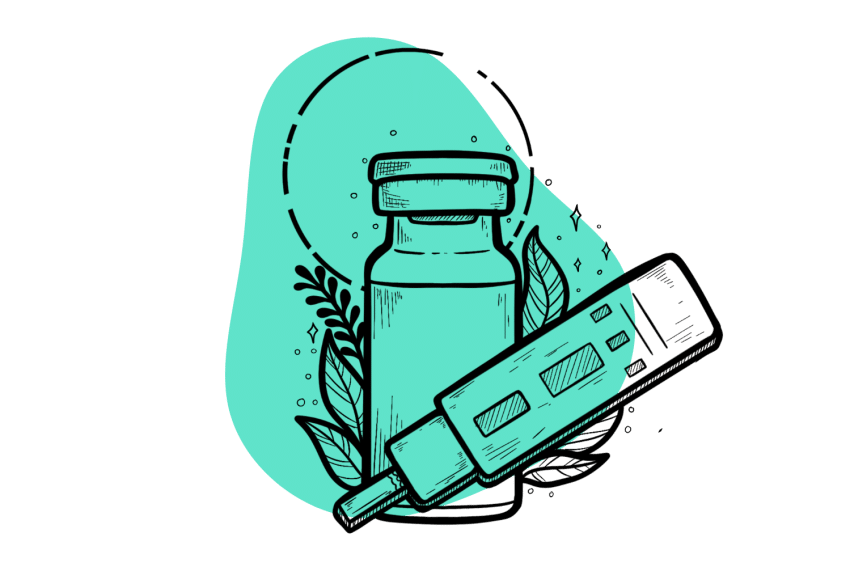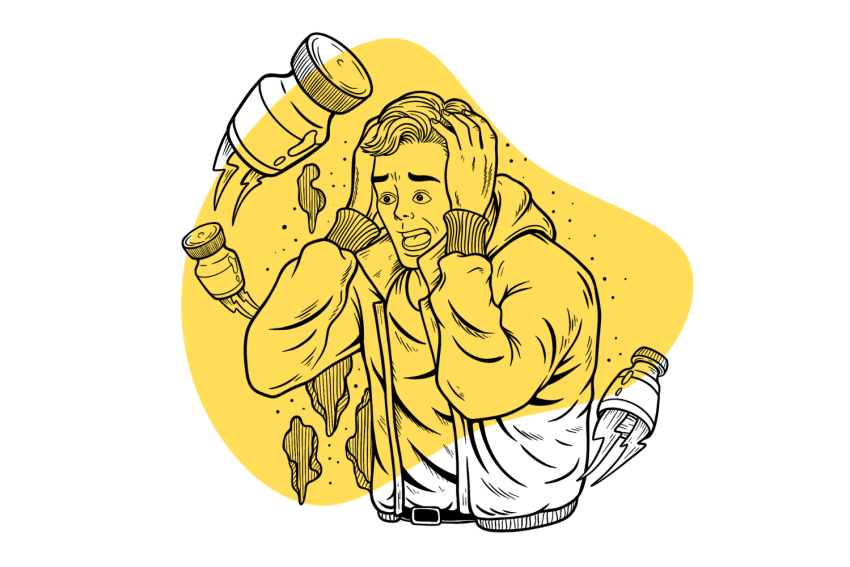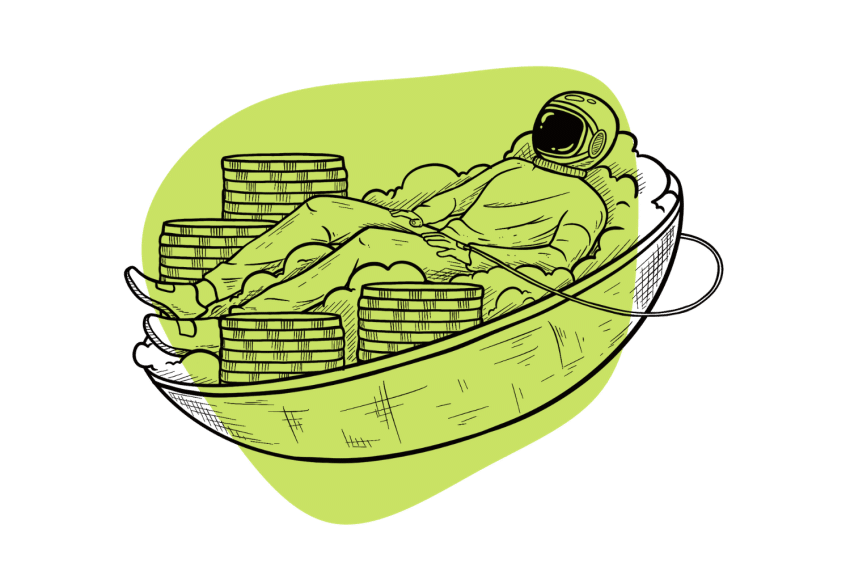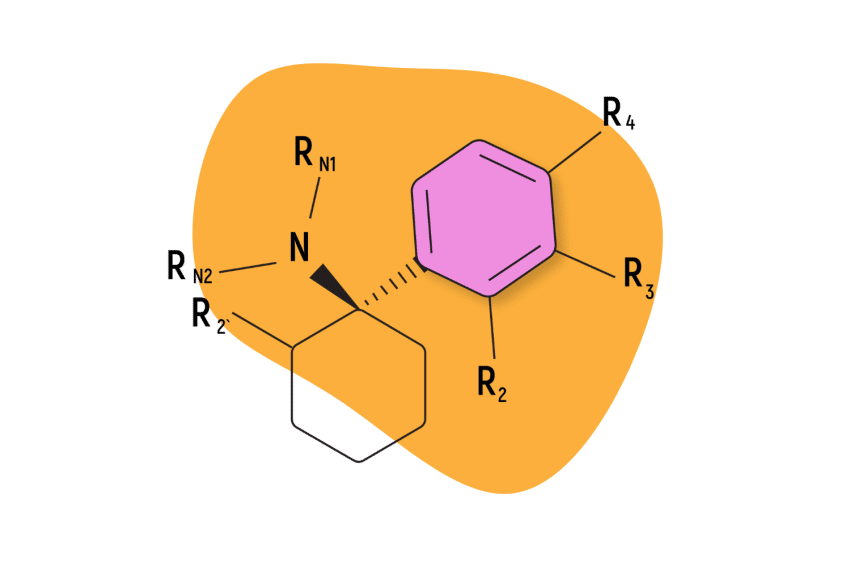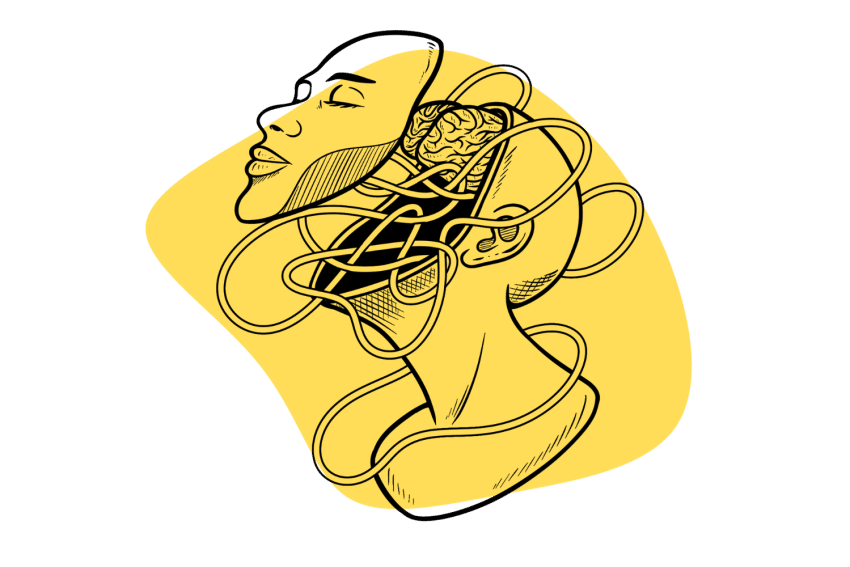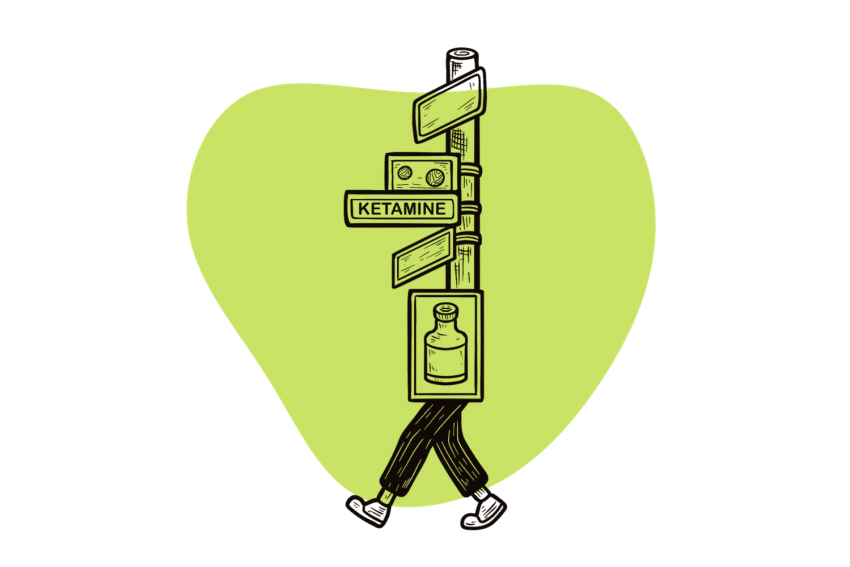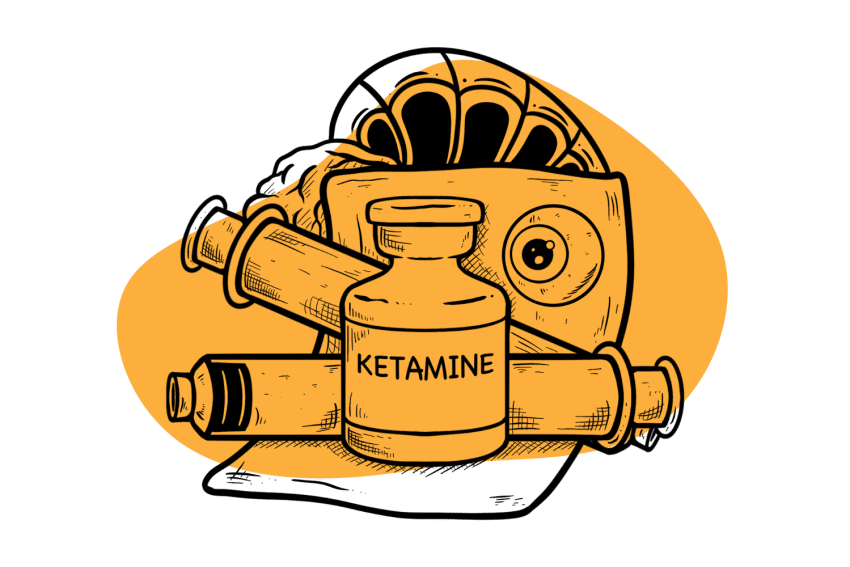What’s the Dose of Ketamine for Treating Depression?
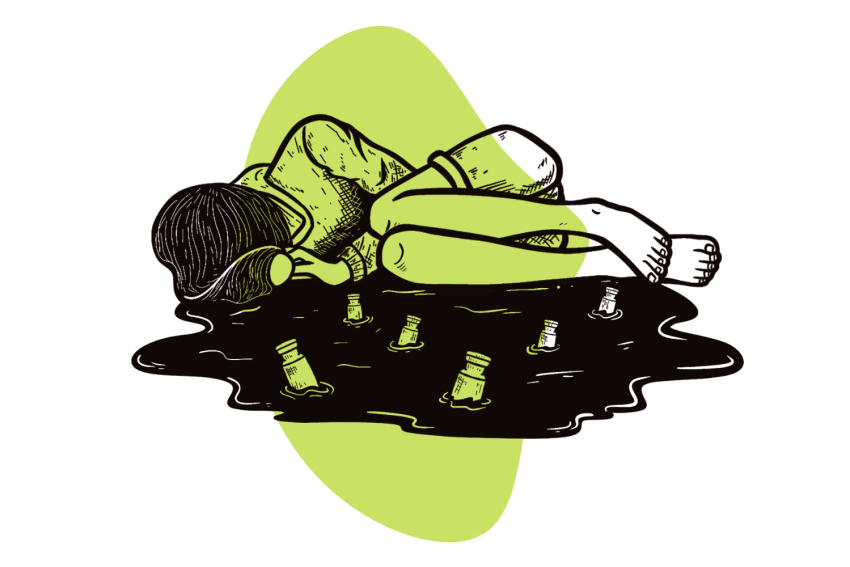
Ketamine treatments for depression come in many different forms. Intravenous, intramuscular, intranasal, and oral ketamine all have similar effects, but the protocol and dose for each method are unique.
There is no official standard dose for safe and effective use. Finding the right ketamine dose for depression may require some calibration as everyone responds to treatment a bit differently.
Ketamine for Depression Dose
Choosing the best route of administration means deciding on what method you are comfortable with, what is available in your area, the cost (and potential insurance coverage), and what is deemed safe by a health professional.
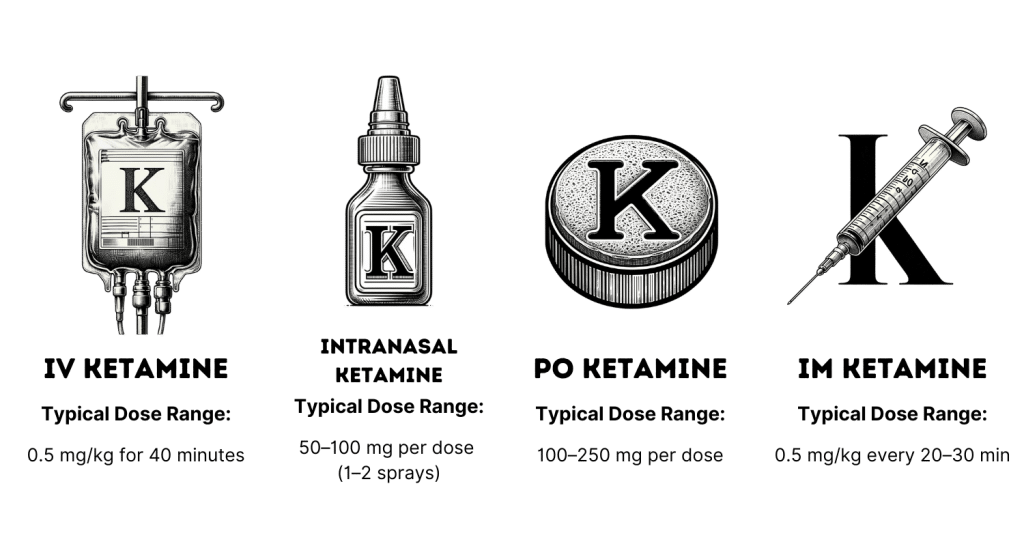
Ketamine Infusion Dose for Depression
Ketamine infusions are widely regarded as the most effective route of administration due to their near-complete bioavailability.
A typical subanesthetic ketamine infusion for depression is 0.5 mg/kg [1], often delivered over 40 minutes.
A standard dose for depression is not firmly established. Depending on one’s response and how the body tolerates ketamine, more or less ketamine may be used. Doses of 0.1 mg/kg up to 1 mg/kg have been reported, with varying results.
An infusion involves an IV being inserted into the arm, causing a deep experience that lasts about 40 minutes. Ketamine infusions for depression usually last four to six weeks, during which six treatments are given. Effects last about ten to fourteen days.
While some people enter remission after a series of ketamine treatments, this is not the norm, and recurring treatments are often required, along with therapeutic support.
Infusions have essentially 100% bioavailability, meaning all the ketamine is absorbed. The method is widely used in clinics around the world and is the gold standard of current treatment. However, as an off-label treatment, insurance rarely covers infusions, and many people have to pay out of pocket.
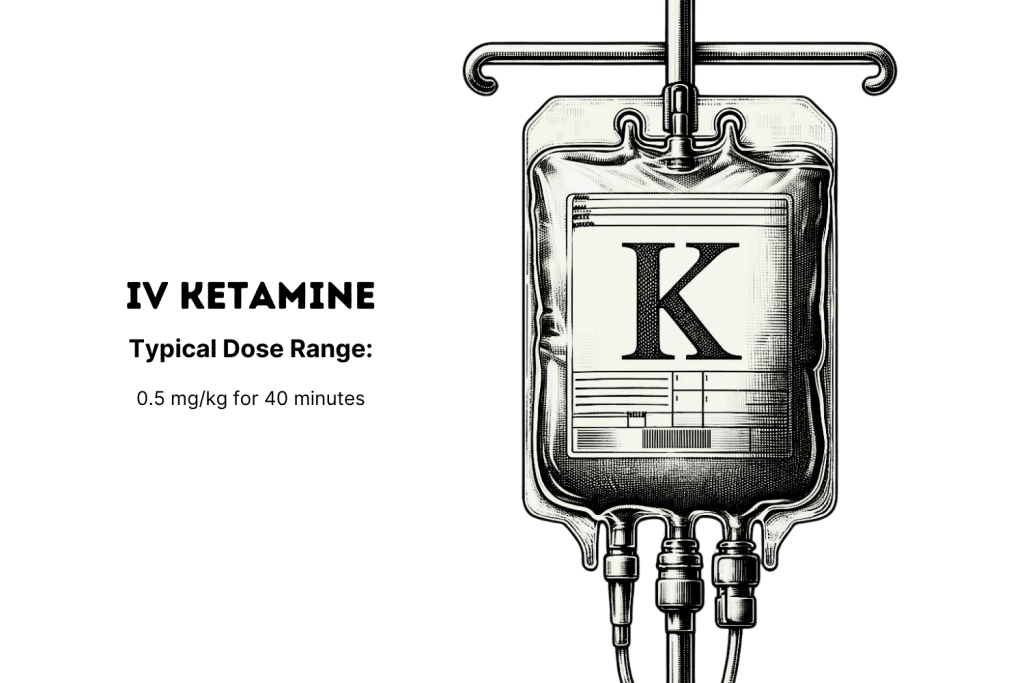
Intranasal Ketamine Dose for Depression
Intranasal ketamine is given over several months. For the first dose, 56 mg (or two sprays) is recommended. Depending on the response, the dose may be increased to 84 mg.
Once the optimal dose is established, treatment is twice weekly for the first month. The following month, it is only once weekly, with one dose every week or two after that.
Intranasal ketamine, typically in the form of the prescription medication Spravato (technically esketamine), can sometimes be fully covered by insurance, thanks to FDA approval. Spravato is specifically approved for treatment-resistant depression.
The fairly high (although variable) bioavailability of intranasal ketamine makes it an effective treatment option. While the effects are not quite as immersive as those of intravenous ketamine (you won’t enter what is known as the K-hole), there are still side effects, and intranasal ketamine requires doctor supervision.
Related: How Much Does Ketamine Therapy Cost?
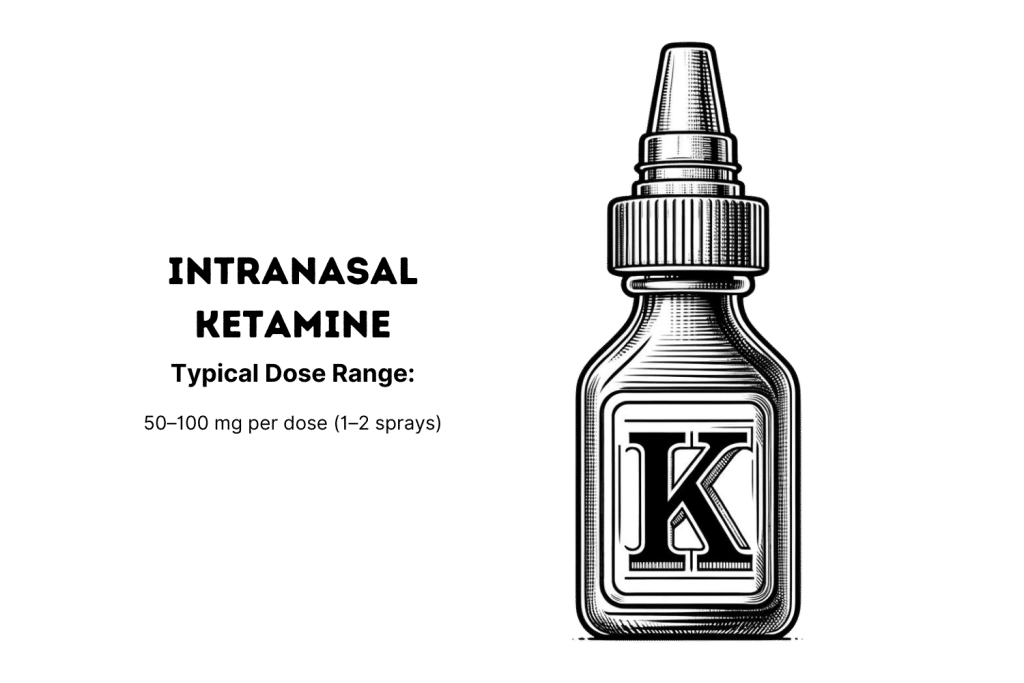
Oral Ketamine Dose for Depression
Oral ketamine, such as troches or lozenges obtained from telehealth providers, has no standardized dose. Research suggests that 1 mg/kg is safe [3]. However, this depends on the treatment protocol, the prescribing doctor, and the patient’s health goals.
Common dosages for online ketamine clinics are between 100 and 250 mg of ketamine (single doses).
Some companies, like Joyous, provide doses that are taken every day. Others, like Mindbloom, prescribe higher doses that provide a more psychedelic journey several times per week. Practitioners determine the length of time since it is not standardized. Unfortunately, strong placebo-controlled evidence is lacking, particularly on the long-term effects. However, many people report benefits.
Oral ketamine has the poorest bioavailability but is pretty cheap and accessible in most states. The convenience of telehealth has spurred the popularity of this method. Oral ketamine can have some side effects and should be treated with caution, as it can be used without the supervision of a medical or mental health professional.
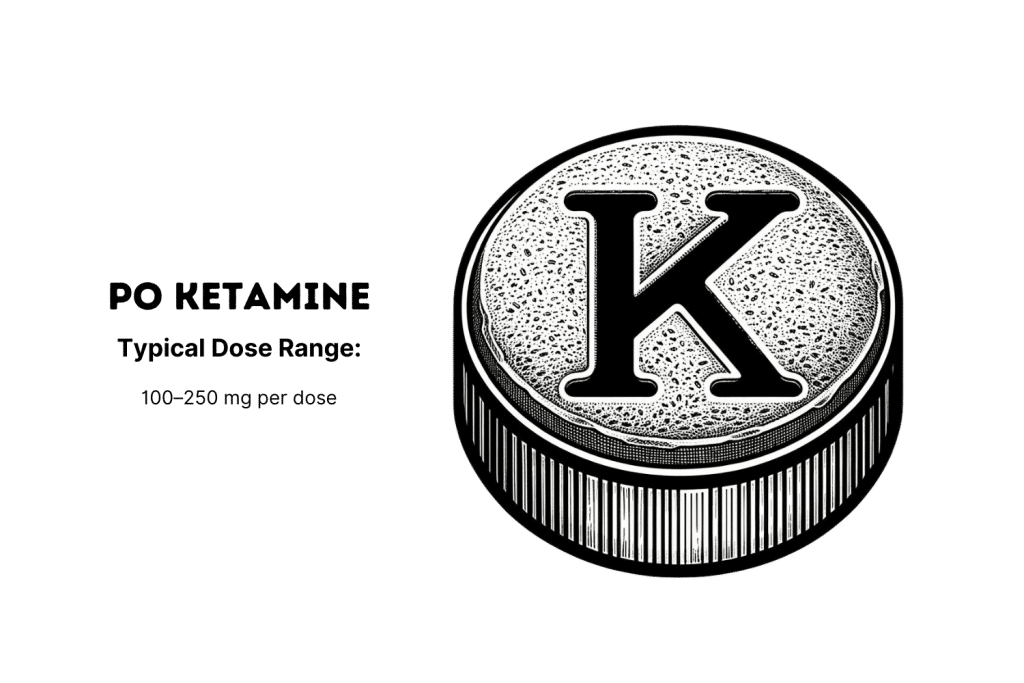
Intramuscular & Subcutaneous Ketamine Dose for Depression
Intramuscular injections of ketamine for depression are less common and are typically about 0.5 mg/kg [4]. Certain clinics and retreats favor this method because IM administration can be done by non-anesthesiologists. Certain practitioners and patients also prefer this method.
Ketamine has a high bioavailability and rapid onset with this method, although it’s not quite as efficient and rapid as intravenous. For lasting effects on depression, you’ll need multiple sessions along with adequate supervision and psychological support.
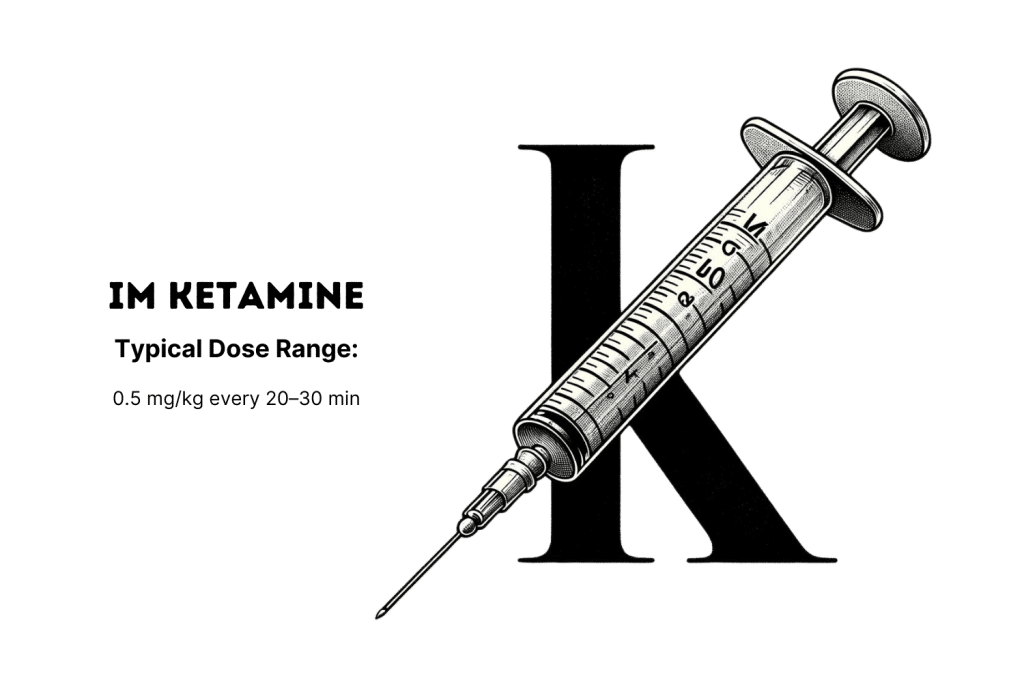
Side Effects of Using Ketamine for Depression
When used by healthy people within the prescribed guidelines, ketamine is safe and well-tolerated. Reports in the media of addiction, issues with the liver, kidney, bladder, and cognitive problems are associated with abuse.
However, even in controlled settings, ketamine can have side effects. The rate of serious adverse effects, such as those that may require discontinuing treatment, was estimated to be around 2% [5].
During a ketamine treatment, one might experience:
- Disassociation
- Hallucinations
- Fluctuations in blood pressure
- Increase in heart rate
- Headache
- Sedation
- Dizziness
- Nausea
- Fatigue
- A “drunk” feeling
After a ketamine treatment, some of these side effects can persist but usually resolve within a couple of hours.
Other side effects post-treatment may include:
- Mood swings
- Memory issues
- Worsening of symptoms
- Chest pain
- Palpitations
- Vertigo
- Metallic taste
One study has referenced Spravato as causing bladder issues [6]. This is not the norm, but for those with existing bladder conditions, this could be a concern.
Related: Ketamine Therapy — Who Isn’t a Good Fit?
Ketamine Depression Remission Rate
Ketamine’s long-term effects on depression depend on the person, protocol, and how one responds to ketamine. Everyone is a bit different, and not everyone will experience long-term benefits.
A few studies have reviewed whether ketamine works long-term for depression. After patients receive six ketamine infusions, relapse into depression at around the two-week mark is frequent, with many folks opting to use “boosters,” which are additional, ongoing infusions to maintain relief.
One long-term study done by Yale shows that after two years, the vast majority of patients had relapsed [7].
Ketamine Depression Mechanism
Exactly how ketamine treats depression is not clear. Ketamine creates a wide range of effects in the body, making it difficult to pin down one specific mechanism of action.
However, so far, researchers have speculated on ketamine’s interaction with the following receptors in the brain as potential mechanisms:
1. NMDA Receptors
Ketamine interacts with glutamate-NMDA receptors. One downstream effect of this is the production of GABA, a neurotransmitter implicated in calming the nervous system. Other potential downstream effects include nerve growth by stimulating mTOR.
2. Opioid Receptors
Ketamine binds to various opioid receptors, although it does not work like opioids like morphine. Studies have shown that if ketamine’s effects on the opioid system are less, relief from depression is also lower [8].
3. AMPA Receptors
Ketamine binds to AMPA, another receptor involved with glutamate transmission. Research shows when this is blocked, one of ketamine’s metabolites, (2R,6R)-hydroxynorketamine, cannot elicit antidepressant effects [9].
Ketamine Works Best With Therapy
While finding the right route of administration and dose is essential, improvements in symptoms of depression are best supported with therapy.
Research has demonstrated ketamine is more effective with ongoing therapeutic relationships [10]. When using cognitive behavioral therapy alongside ketamine, results were extended by several weeks before some patients relapsed. Those who did not respond to ketamine also did not respond to therapy.
Related: Ketamine Therapy — Benefits, Cost, and Criticism

FAQs: Ketamine for Depression
Here are some of the main questions we get asked about ketamine and its use as an antidepressant.
1. How Long Does Ketamine Last?
A ketamine infusion will last about 40 minutes, with effects potentially lingering for a few hours afterward.
A Spravato treatment typically lasts 2 hours, with effects felt for about 40 minutes.
With higher doses, oral ketamine can last longer, sometimes one to three hours. The effects can also linger for many hours afterward.
The antidepressant effects of ketamine can last a few days to a couple of weeks.
2. How Long Does Ketamine Stay in Your System?
Ketamine is typically cleared from blood and saliva in 24 hours.
One study documented ketamine being detected in urine for two weeks, although ketamine is not typically included in standard drug tests.
Hair and fingernail testing may be able to detect ketamine for three months.
3. Is Ketamine Safe?
Ketamine has a well-established safety profile and is safe for most people when used within recommended guidelines in a supportive setting.
In therapeutic settings, the risk of ketamine addiction is relatively low.
References
- Fava, M., Freeman, M. P., Flynn, M., Judge, H., Hoeppner, B. B., Cusin, C., … & Papakostas, G. I. (2020). Double-blind, placebo-controlled, dose-ranging trial of intravenous ketamine as adjunctive therapy in treatment-resistant depression (TRD). Molecular psychiatry, 25(7), 1592-1603.
- Bahr, R., Lopez, A., & Rey, J. A. (2019). Intranasal esketamine (SpravatoTM) for use in treatment-resistant depression in conjunction with an oral antidepressant. Pharmacy and Therapeutics, 44(6), 340.
- Domany, Y., Bleich-Cohen, M., Tarrasch, R., Meidan, R., Litvak-Lazar, O., Stoppleman, N., … & Sharon, H. (2019). Repeated oral ketamine for out-patient treatment of resistant depression: randomised, double-blind, placebo-controlled, proof-of-concept study. The British Journal of Psychiatry, 214(1), 20-26.
- Chilukuri, H., Reddy, N. P., Pathapati, R. M., Manu, A. N., Jollu, S., & Shaik, A. B. (2014). Acute antidepressant effects of intramuscular versus intravenous ketamine. Indian journal of psychological medicine, 36(1), 71-76.
- Wilkinson, S. T., Katz, R. B., Toprak, M., Webler, R., Ostroff, R. B., & Sanacora, G. (2018). Acute and longer-term outcomes using ketamine as a clinical treatment at the Yale Psychiatric Hospital. The Journal of clinical psychiatry, 79(4), 10099.
- Nikayin, S., Murphy, E., Krystal, J. H., & Wilkinson, S. T. (2022). Long-term safety of ketamine and esketamine in treatment of depression. Expert opinion on drug safety, 21(6), 777-787.
- Wilkinson, S. T., Katz, R. B., Toprak, M., Webler, R., Ostroff, R. B., & Sanacora, G. (2018). Acute and longer-term outcomes using ketamine as a clinical treatment at the Yale Psychiatric Hospital. The Journal of clinical psychiatry, 79(4), 10099.
- Williams, N. R., Heifets, B. D., Blasey, C., Sudheimer, K., Pannu, J., Pankow, H., … & Schatzberg, A. F. (2018). Attenuation of antidepressant effects of ketamine by opioid receptor antagonism. American Journal of Psychiatry, 175(12), 1205-1215.
- Zanos, P., Moaddel, R., Morris, P. J., Georgiou, P., Fischell, J., Elmer, G. I., … & Gould, T. D. (2016). NMDAR inhibition-independent antidepressant actions of ketamine metabolites. Nature, 533(7604), 481-486.
- Wilkinson, S. T., Wright, D., Fasula, M. K., Fenton, L., Griepp, M., Ostroff, R. B., & Sanacora, G. (2017). Cognitive behavior therapy may sustain antidepressant effects of intravenous ketamine in treatment-resistant depression. Psychotherapy and Psychosomatics, 86(3), 162-167.

